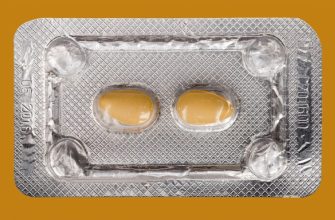Need a clearer picture of the famous Cialis “Two Tubs” commercial? Focus on the message: it highlights the sustained effect of Cialis. Unlike other medications, Cialis provides up to 36 hours of effectiveness. This means you’re not limited to a short window of opportunity.
The imagery of two bathtubs – one overflowing, one nearly empty – visually represents this extended duration. The overflowing tub symbolizes the prolonged effect, contrasting with the shorter duration implied by the nearly empty tub. This simple visual aids in quickly grasping the key difference.
Remember, always consult your doctor before starting any medication, including Cialis. They can assess your individual health needs and determine if Cialis is the right choice for you. Your doctor can provide personalized advice and discuss potential side effects.
Key takeaway: The commercial uses a memorable visual metaphor to emphasize Cialis’s unique, long-lasting effect. Don’t hesitate to seek professional medical advice before using this or any other medication.
- Two Tubs Cialis Commercial: A Detailed Analysis
- Visual Storytelling and Emotional Impact
- Messaging and Target Audience
- Technical Aspects and Effectiveness
- Alternative Approaches and Future Directions
- The Commercial’s Visual and Auditory Elements: Impact and Interpretation
- Sound Design and Music
- Overall Impact
- Target Audience and Marketing Strategy: Who is the Commercial Targeting?
- Specific Demographics and Psychographics
- Effectiveness of the Commercial: Did It Achieve its Goals?
- Ethical Considerations and Social Impact: Representation and Responsibility
Two Tubs Cialis Commercial: A Detailed Analysis
The “Two Tubs” Cialis commercial cleverly utilizes visual metaphors to convey its message. The contrasting visuals – one tub overflowing with vibrant activity, the other stagnant and empty – directly represent the impact Cialis can have on a man’s life. This approach is remarkably effective because it avoids explicit descriptions of erectile dysfunction, instead relying on powerful imagery.
Visual Storytelling and Emotional Impact
The commercial’s strength lies in its ability to connect with viewers on an emotional level. We see energetic individuals enjoying life to the fullest in the “full” tub, a stark contrast to the emptiness and isolation depicted in the other. This juxtaposition creates a powerful sense of longing and aspiration, subtly implying that Cialis can facilitate a return to a more fulfilling lifestyle.
Messaging and Target Audience
The advertising cleverly targets a mature male demographic. The scenes are realistic, relatable, and avoid the overly-sexualized approaches often seen in other pharmaceutical commercials. The message is about regaining control, regaining vitality, and enjoying life’s simple pleasures. This resonates strongly with the target age group, promoting a sense of empowerment and self-confidence.
Technical Aspects and Effectiveness
The commercial’s pacing is deliberate; the shots are long enough to allow the imagery to sink in, without being overly slow or boring. The use of music complements the mood perfectly. It enhances the emotional impact of the visual storytelling, creating a lasting impression on the viewer. The overall production value is high, making the commercial memorable and attention-grabbing. The strategy is effective because it’s memorable, relatable, and impactful.
Alternative Approaches and Future Directions
While the “Two Tubs” approach proved highly successful, future campaigns could explore variations. For example, focusing on specific aspects of improved quality of life, such as increased intimacy or improved relationships, could resonate with viewers. Using different visual metaphors, while maintaining the focus on improved lifestyle, could offer fresh perspectives.
The Commercial’s Visual and Auditory Elements: Impact and Interpretation
The “Two tubs Cialis” commercial cleverly uses contrasting visuals to highlight its message. The initial scenes depict a man struggling with everyday tasks, his movements slow and labored. This visual depiction of erectile dysfunction’s impact on daily life immediately connects with the viewer on an emotional level. The color palette is muted, reflecting the man’s low energy and frustration. This contrasts sharply with the later scenes, which are brighter and more dynamic, showcasing the renewed energy and activity the medication provides. This shift in visuals reinforces the product’s benefit.
Sound Design and Music
The soundtrack plays a significant role. The initial music is subdued and melancholic, mirroring the man’s struggle. The tempo and tone then noticeably lift as the commercial progresses, directly correlating with the improved physical state shown visually. This subtle, yet effective, use of sound enhances the emotional impact of the visual changes and strengthens the message of renewed vitality. Specific sounds – like the distinct splash of water from the tubs or the crisp sound of the man moving freely – add to the overall sensory experience, enhancing the effectiveness of the advertisement.
Overall Impact
The combined visual and auditory elements create a powerful narrative. The commercial avoids being overly explicit, relying instead on subtle shifts in tone, color, and sound to convey the positive transformation Cialis offers. This approach creates a memorable and impactful advertisement that is both engaging and effective in communicating its message.
Target Audience and Marketing Strategy: Who is the Commercial Targeting?
The “Two tubs Cialis” commercial primarily targets men aged 40-70 experiencing erectile dysfunction (ED). This demographic represents a significant portion of the population affected by ED and are likely to be receptive to pharmaceutical advertising for treatment options. The commercial’s lighthearted tone and relatable scenarios aim to reduce stigma associated with ED, encouraging viewers to seek help.
Specific Demographics and Psychographics
Beyond age, the campaign likely targets men with a higher disposable income, as Cialis is a prescription medication with a relatively high cost. Psychographically, the ads aim to connect with men who value their relationships, sexual health, and overall well-being. The imagery used in the commercials suggests a focus on men who are active and engaged in life, and want to maintain an active sex life.
Marketing strategies likely incorporate targeted online advertising on platforms frequented by this demographic, including health and wellness websites, and social media platforms like Facebook and YouTube. Print advertising might appear in magazines read by older men, as well as strategically placed TV spots during programs with relevant viewership.
Effectiveness of the Commercial: Did It Achieve its Goals?
The “Two tubs Cialis” commercial likely aimed to increase brand awareness and drive sales. Success hinges on measurable results. Did viewership increase significantly after the campaign launched? Did website traffic and Cialis prescriptions follow suit? Analyzing these metrics provides concrete answers.
- Brand Awareness: Social media mentions, online searches, and brand recall surveys provide insights into how memorable the commercial was. A spike in these metrics post-launch strongly suggests a successful awareness campaign.
- Sales Impact: Tracking Cialis prescriptions before, during, and after the commercial’s airing offers direct evidence of sales influence. A noticeable increase points to a positive return on investment.
- Target Audience Reach: Did the commercial resonate with its intended audience? Demographic data from online viewing and survey responses can reveal whether the commercial’s message reached the right people.
Beyond raw numbers, qualitative data is crucial. Focus groups and online sentiment analysis can reveal viewer reactions. Positive feedback suggests the commercial created a favorable brand image. Negative feedback highlights areas needing improvement for future campaigns.
- Did the humor employed land well with the audience?
- Did the message clearly convey the product’s benefits?
- Did the commercial’s visuals effectively communicate the brand identity?
By analyzing both quantitative and qualitative data, a comprehensive assessment of the commercial’s performance becomes possible. This approach allows for informed decisions regarding future marketing strategies.
Ethical Considerations and Social Impact: Representation and Responsibility
Pharmaceutical advertisements must prioritize accurate information. Misrepresenting efficacy or minimizing side effects is unethical and potentially harmful. Advertisers should provide balanced information, including both benefits and risks, in a clear and easily understandable manner.
The portrayal of men in advertising significantly impacts societal perceptions. Stereotypes, such as associating virility solely with sexual performance, should be avoided. Instead, advertisements should portray diverse and realistic representations of men and their experiences with age and health.
Transparency in advertising is key. The source of funding for the advertisement, including any relationships with pharmaceutical companies, should be clearly stated. This builds trust and prevents conflicts of interest from influencing the message.
Consider the audience. Ensure that the language and imagery used are appropriate and inclusive, avoiding potentially offensive or discriminatory content. This approach promotes responsible advertising that respects the diversity of viewers.
Independent verification of claims is recommended. All statements regarding product efficacy should be backed by robust scientific evidence and peer-reviewed studies. This ensures that the advertising does not promote misinformation or false expectations.
Regular reviews of advertising campaigns are needed to assess their impact and potential for harm. Feedback mechanisms should be in place to address any concerns promptly and make necessary adjustments.
Regulatory bodies play a vital role in upholding ethical standards. Stronger regulations and robust enforcement are necessary to ensure that pharmaceutical advertisements meet ethical guidelines and protect the public.










